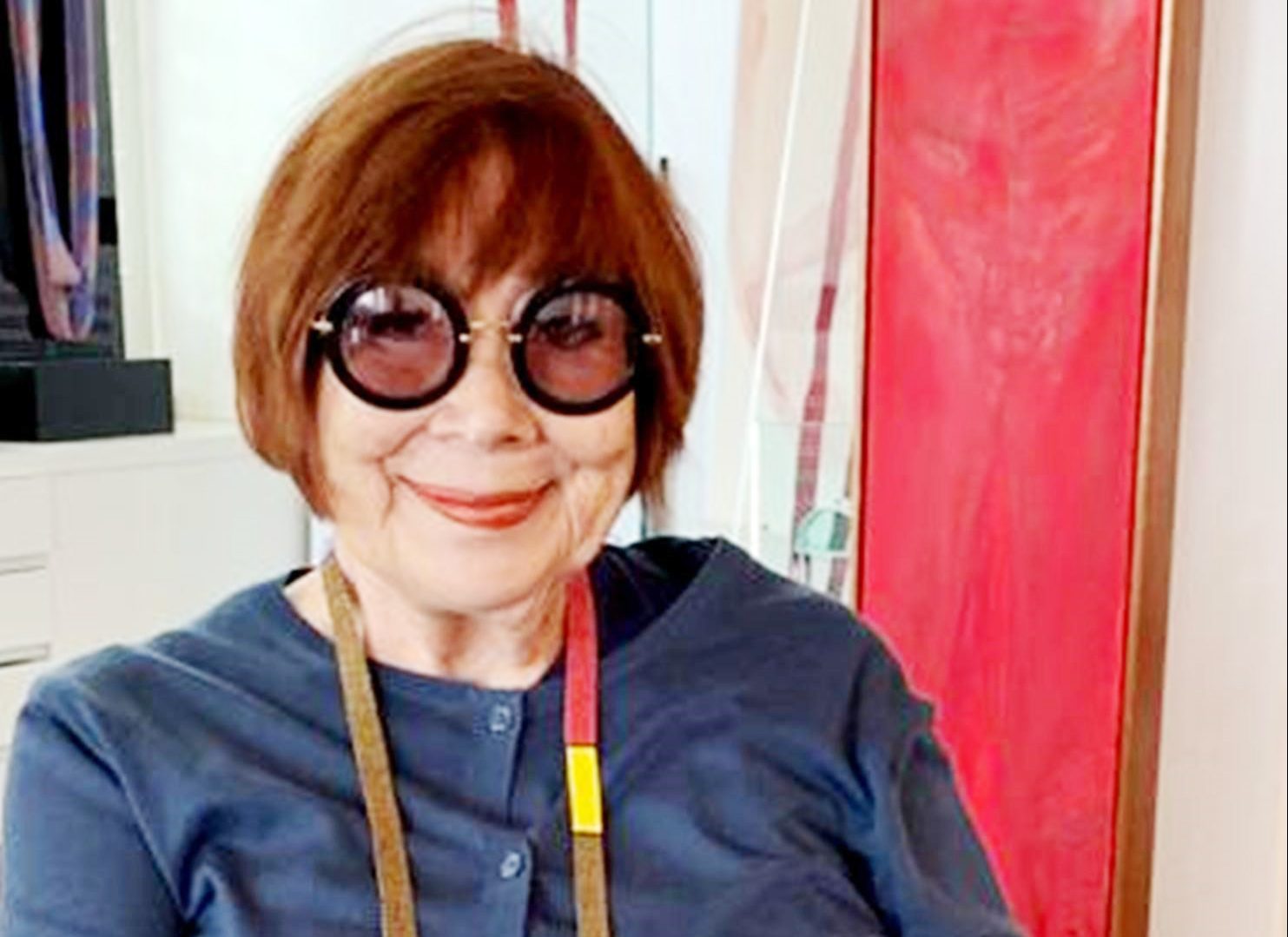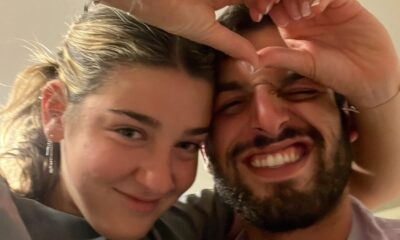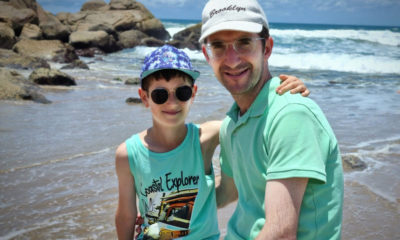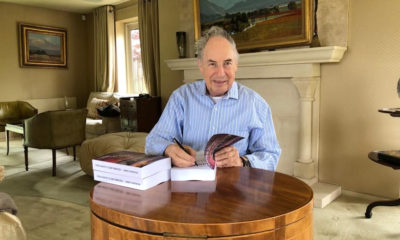
Featured Item

Linda Givon: turning art into activism
Published
3 years agoon
Linda Goodman Givon, the founder of the world-renowned Goodman Gallery and known as “South Africa’s first lady of art” and “the grande dame of the South African art world”, passed away on 5 October in Johannesburg.
Held in the highest regard across the global art world, Givon will be remembered as the gallerist who refused to abide by apartheid laws and put South African art on the map.
Speaking to the SA Jewish Report from Los Angeles, her son, Robert Miller, reflected that she was “primarily responsible for bringing the South African art scene to where it is today, both in South Africa and internationally”. Due to the pandemic, Miller is unable to return to South Africa for his mother’s funeral.
Givon, born Linda Finger, was the daughter of Morris and Hetty Finger, both immigrants from Lithuania. Her father first moved to London’ East End before coming to South Africa after World War II. Here, he became a prominent businessman and member of the community, founding a shul in Yeoville, and becoming very involved in Oxford Shul.
“Her mother, Hetty, never had a formal education, but she devoted life to education and culture, and was an avid art collector,” says Miller. “She would hold lectures and classes at their house.” From this conservative but deeply cultural environment, Givon became a “rebel with a cause”, and a lifelong devotee to the arts.
She graduated from the University of the Witwatersrand with a Bachelor of Arts degree and graduated from the London School of Dramatic Art with a teaching and acting diploma. She travelled to Florence, and for a time she worked as an actress. She married Brian Miller, the father of her two children, and they settled in London.
“It was in London that she ended up working at Grosvenor Gallery”, an important turning point in her life. “This was where she ‘cut her teeth’, and was mentored by [American art collector, art dealer, and author] Eric Estorick. It was her entry into the commercial art world,” says her son.
She returned to South Africa with her children, and later married Tony Goodman. “I was six or seven when she founded the Goodman Gallery in 1966, in her father’s shopping centre, Hyde Square,” recalls Miller.
“From the beginning, she lived her life as if apartheid didn’t exist. She launched artists on the basis of what she saw as their quality, skill, and their ability to see what needed to be expressed in South Africa at the time,” says Pippa Skotnes, professor of fine art and the director of the Centre for Curating the Archive at the University of Cape Town.
“She did it fearlessly,” Skotnes says. “She was working in a ‘man’s world’, commanding a team of dedicated people,” and she herself was “quite terrifying at times! She had a strong presence and personality.”
Launching the careers of black artists meant “defying apartheid laws, applying for black artists to stay overnight in white areas so that they could attend their own exhibition openings”, Skotnes says.
In her own words, Givon told the New York Times in 2003 how exhibition openings required “cop watchers”, who kept an eye out for the Special Branch police unit, who were sure to shut down multiracial gatherings. Givon told of how she kept stacks of trays around and handed them to black guests if the police arrived. “Everyone would turn into a waiter,” she said. “We would have more waiters than guests at our openings!”
This anecdote has become legend, and was just the tip of the iceberg of how Givon ensured that her gallery was an activist institution. As a child, Miller remembers meeting black artists that Givon harboured in their home. “It was dangerous, as these artists were under scrutiny.”
Miller said they often asked their mother if she was in danger. “I believe her phones were tapped. She walked a fine line. While I don’t think there was ever an overt threat, she was definitely ‘on the radar’. She took a stand every day.”
Givon’s generosity and philanthropy stands out in many accounts. “Linda was always someone I could go to for advice or help. When we had a special student who couldn’t afford the fees to study further, she willingly supported them. She set up a bursary fund, and always followed our students with interest,” says Kim Berman, professor in visual art at the University of Johannesburg (UJ).
“After the fire that burnt down [community-based printmaking centre] Artist Proof Studio in which Nhlanhla Xaba died, Linda called me to come and see her. We were devastated, not knowing how to go forward. She took out her cheque book, and wrote out a personal cheque for R150 000. It was to buy a start-up kit for every artist who lost their work and livelihood. We bought 60 portfolios, sketchbooks, and art materials. She didn’t want to be there at the presentation, preferring to remain anonymous. She helped so many of us believe in ourselves, and gave us the confidence and example to follow our dreams, to succeed, but always to give and look back.”
For Liza Essers, Givon’s generosity began when Essers was just starting out as an art collector, and the gallery owner would take time to walk her through the exhibitions and allow her to pay for her purchases in instalments. The two worked on a number of projects together before Givon eventually sold the Goodman Gallery to her in 2008. “While it was hard for her, she did this with much grace and leadership, standing back to allow me to take the gallery in new directions,” says Essers.
“From the start, her identity was completely tied up in the gallery and its mission. She was the gallery and the gallery was her,” says Miller. So when her health declined and she made the decision to sell, he admits that the impact was “brutal”. “It was such an integral part of her, but physically she just couldn’t keep up.” She married her third husband, Reuben Givon, in 1974, and spent her later years as a patron of the arts and completing an autobiography that is yet to be published.
Essers says that because there is so little funding for the arts in South Africa, the Goodman Gallery filled that role, becoming a “centre for contemporary art. Students would come there to read books on art, and the gallery would fund big museum shows to make art more accessible”.
Givon’s legacy continues in the Goodman Gallery’s enduring leadership of the South African art world, and in art collections around the globe. In an online tribute page set up by the Goodman Gallery, Yvette Christiansë and Rosalind Morris write from the United States, “Our home is a haven of places at which to stand, to pause, and inhale thanks to the Goodman Gallery. Our walls open to lives and worlds… Each room of our home contains the luck of such encounters, and this luck began with Linda and Neil [Dundas, the Goodman Gallery’s senior curator] who embraced our eager, timid hopes of buying our first pieces. We will take time today to pause in front of our favourite pieces and think of her with a mix of newly grieving joy.”
Miller believes his mother’s legacy is one of generosity, compassion, and humanity. “She was the cornerstone of an entire cultural milieu,” he says.










